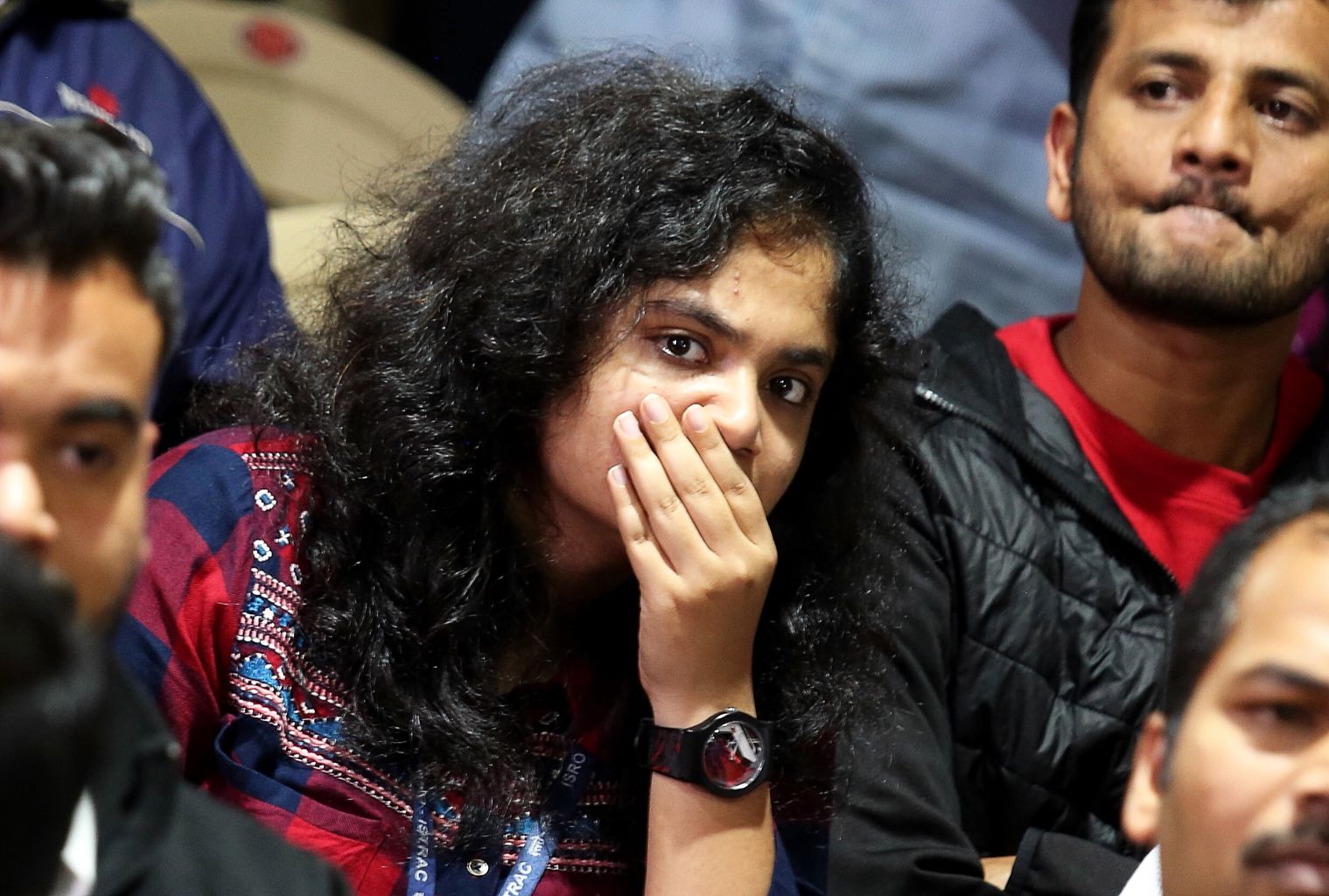India loses contact with spacecraft trying to land on Moon
Sign up now: Get insights on Asia's fast-moving developments

People react at the command centre after communication with the lander was lost.
PHOTO: EPA-EFE
Follow topic:
NEW DELHI - India's ambitious space programme suffered a setback after scientists lost contact with the spacecraft trying to land on the south pole of the moon, a mission that had fired up the imagination of people in the country.
Amid nationwide disappointment over the Chandrayaan-2 mission, experts said the setback is unlikely to hamper India's efforts to be at the forefront of space exploration, which includes an ambitious human spaceflight programme in 2022.
Scores of Indians had tuned in to watch the Vikram lander touched down on the south pole of the moon in the early hours of yesterday ( Sat) morning, as India sought to become the fourth nation to land on the moon after the United States, China and the former Soviet Union.
The 15-minute descent of the lander was the most complex part of the mission .
Scientists lost contact with the lander just 2.1 km above the surface and within four minutes of its descent.
Prime Minister Narendra Modi, was at the Indian Space Research Organisation (ISRO) control room where he comforted upset scientists. He said: "What we have achieved is not small. There will be ups and downs and Chandrayaan-2 is not a small mission, we should hope for the best."
"Everyone stands in solidarity with our scientists. We are proud of our space programme. Today our resolve to touch the moon has grown even stronger."
The mission would have seen a soft-landing on the lunar surface and the operation of a robotic rover on the surface. The rover was meant to study the lunar topography and search for water, adding to international efforts to study the moon.
India's External Affairs Minister S Jaishankar said in an interview with The Straits Times: "The fact that they came that close was really creditable. Sometimes, not everything goes 100 per cent right. The sense of the country today is that we admire these guys for getting it to where they did and where we are very confident that they will do it successfully the next time around."
India built up its space programme indigenously over the last couple of decades to much national acclaim. It has been successful in launching low-cost satellites into space for countries including Singapore.
In recent years, the scope of the space programme has widened from satellite launches to space exploration amid a renewed global interest in exploring space.
In May 2014, ISRO launched the Mars Orbitor, becoming the first nation in Asia to reach the Red Planet after China failed to do so. In April this year, India shot down a live satellite in space, becoming only the fourth country with such capabilities.
ISRO said it is analysing data to see what went wrong with the mission.
But experts and scientists still called it a partial success. The mission also includes an orbiter which was successfully placed and will take photographs of the moon for a year.
"The orbiter will remain for a year and is in a healthy condition. 60 to 70 per cent of the investment was in the orbiter. Instead of calling the mission a failure, it is a partial success. The science is going to remain. This is a slight setback,'' said Prof Ajay Lele, senior fellow at the Institute for Defence Studies and Analyses.
"Any space programme goes through phases of success. ISRO has had failures in the past. But ISRO will have to come out with a proposal of their plans now.''
In the works since 2007, the moon mission has seen some delays. ISRO had postponed the launch of the moon mission due to some technical snag on July 15 and launched it seven days later.
"This was going to be a very complex mission for India. It was for the first time that India was landing on non-terrestrial surface. This is a completely unmapped region of the lunar surface which added to the complexities. Overall global success rate (on space missions) is 50 per cent,'' said Dr Rajeshwari Pillai Rajagopalan, senior fellow and head of the Nuclear and Space Policy Initiative at the Observer Research Foundation.
"This was completely indigeneous production and shows India's competency in complex payloads. .''

